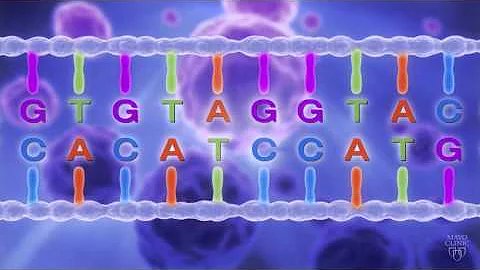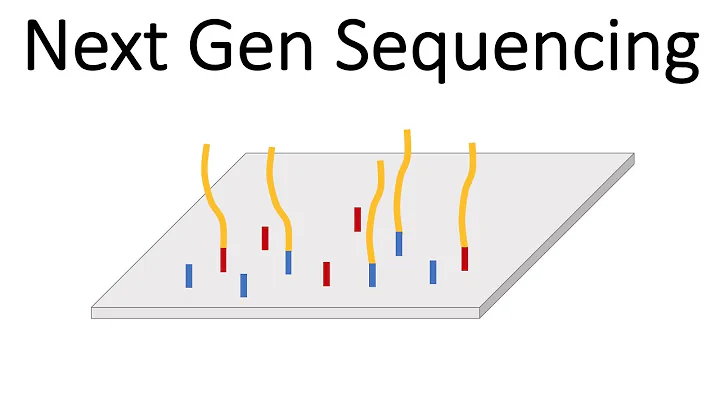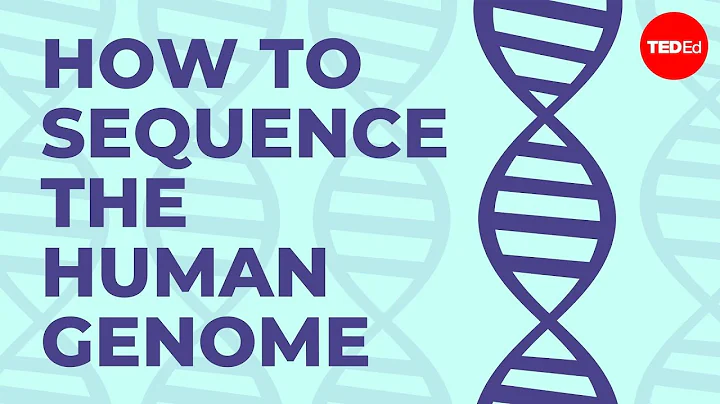
1. Overview of gene sequencing
Gene sequencing is one of the methods of gene detection . It refers to the determination of the base arrangement sequence of DNA molecules of biological samples (tissues, cells, blood samples, etc.) through gene sequencing equipment. That is to measure and interpret the sequence of the four bases adenine (A), thymine (T), cytosine (C) and guanine (G) in the DNA molecule, and further use it for scientific research or clinical diagnosis.
gene sequencing can currently be used in medical and non-medical fields. Non-medical fields mainly include environmental governance, oil storage detection, agricultural and animal husbandry breeding, forensic identification, geology , biodiversity protection , etc. Application scenarios in the medical field can be divided into three categories: scientific research level, clinical level and consumer level: scientific research level applications are for scientific research institutions, universities and pharmaceutical companies; clinical level applications are for patients, and the test results should have clinical significance and can be used as doctors’ diagnosis , treatment basis; consumer-level applications are for ordinary consumers, including skin testing, exercise ability testing, etc. Among them, the market segments such as scientific and technological services and reproductive health are relatively mature and stable, and new fields such as genome synthesis, early tumor screening, and consumer genetic testing are in a period of rapid growth.
Gene Sequencing Medical Application

Data source: Compilation of public information
Gene sequencing has many steps. The production process includes sample preprocessing, nucleic acid extraction, library construction, on-machine sequencing, biological information analysis and report generation and other major links. The sequencing process will involve There are more than a hundred different operating steps, high core technology barriers, complex production processes, difficulty in mastering and innovating technology, and high quality control requirements. It is difficult for new entrants to master various technologies and become competitive in the short term.
Gene sequencing service process

Source: Compilation of public information
2. Gene sequencing industry policy review
Policy support for the gene industry is another positive factor for the development of the gene sequencing industry. The driving force for the gene sequencing industry from the policy side is reflected in the support of the national macro-strategy, the emphasis on gene sequencing and the supervision of the industry. The introduction of many policies related to gene sequencing has promoted the development of the industry.
Policies related to the gene sequencing industry are sorted out

Sources: Government public reports, compiled by Huajing Industrial Research Institute
Related reports: "2022-2027 Market Operation Status and Investment Planning Suggestions Report of China's Gene Sequencing Industry" released by Huajing Industrial Research Institute
3. Gene sequencing industry chain
The gene sequencing industry chain is divided into upstream equipment, reagents and consumables, midstream sequencing services and genetic big data service, and downstream applications. The upstream is mainly the research and development and production of sequencing equipment, consumables and reagents, which is monopolized by multinational giants such as Illumina, ThermoFisher, and Roche. Domestic companies such as BGI are actively deploying; the midstream is a genetic testing service provider for end users, which purchases upstream The company produces sequencing instruments, supporting reagents and consumables, etc. to provide users with genetic testing services and collect service fees from them. Domestic companies are basically concentrated in the midstream, and capital is also concentrated in the midstream; the downstream is the users of genetic testing services, including medical institutions, scientific research institutions, pharmaceutical companies and individual users, etc., which determines the market capacity of the midstream genetic testing service segment. Development prospects and business model characteristics.
Gene sequencing industry chain

Source: Compilation of public information
4. Analysis of the current situation of the gene sequencing industry
1. Market size
From the perspective of the scale of the global gene sequencing market, the market is rapidly expanding, and midstream services have greater space. According to data released by BCC Research, the global gene sequencing market size in 2021 will be US$15.722 billion, which will grow at a CAGR of 19.1% to US$37.721 billion in 2026. The market size of the midstream gene sequencing service field in 2021 will be approximately US$8.238 billion, which will be It will grow at a CAGR of 20.7% to US$21.066 billion in 2026.
Global gene sequencing and service market size and growth rate from 2020 to 2026

Source: BCC Research, compiled by Huajing Industrial Research Institute
From the perspective of domestic market size, China’s gene sequencing market size in 2021 is US$1.590 billion, and will grow from 2.16 billion US dollars to 2.16 billion US dollars. % CAGR will grow to US$4.235 billion in 2026, and China’s gene sequencing service sector is expected to account for approximately 1/10 of the world’s size. Midstream services account for 51.74% of the overall scale of the industry. Compared with upstream and downstream services, they have larger market space and faster industry growth.
China’s gene sequencing market size and growth rate from 2020 to 2026

Source: BCC Research, compiled by Huajing Industrial Research Institute
2, downstream application distribution
From the perspective of global gene sequencing downstream application distribution, academic research is the largest application of gene sequencing. Scenes. According to data from Grand View Research, academic research accounted for 54% of downstream applications in the global gene sequencing market in 2020, making it the largest application scenario. In addition, according to the MGI prospectus, the main customer types of gene sequencers are academic research, clinical research, pharmaceutical and biotechnology companies, hospitals and clinics, and other types. Among them, academic research is still the largest market for sequencers at present, and remains It is growing rapidly and is expected to have a compound annual growth rate of 11.5% and will reach US$5.32 billion by 2027, accounting for 50.6% of the overall industry. Therefore, academic research will remain the main application scenario of gene sequencing for a long time.
Proportion of segmented application areas in the global gene sequencing industry in 2020

Source: Grand View Research, compiled by Huajing Industrial Research Institute
3, industry investment and financing situation
Driven by a series of factors such as technology, legal environment, policy and society, gene sequencing Investment and financing in the sequencing industry are booming. According to statistics, there were a total of 62 gene sequencing financings in China in 2020, with the financing amount reaching 33.21 billion yuan, and the average single financing amount was 536 million yuan. Among them, the financing amount obtained by genetic testing companies in the primary market is 20.59 billion yuan, and many high-quality genetic testing companies have received single large-scale financing. As the top financing events in the TOP10, 9 companies including MGI, Genetronics, Burning Stone, Studi Diagnostics, Zhenhe Technology, etc. have raised a total of 16.419 billion yuan equivalent in RMB, accounting for 79.7%.
Financing situation of China’s gene sequencing industry from 2015 to 2020

Source: Compilation of public information
Judging from the segmentation of financing events, gene sequencing related to the tumor field has received the most attention. In 2020, 31% of financing events occurred in the field of oncology NGS, followed by early cancer screening, accounting for 24%. In addition, the single-cell sequencing project, which ranks fourth in the number of financing events, also mainly focuses on tumors.
Segmentation of financing events in China's gene sequencing industry in 2020 (by quantity)

Source: Compilation of public information
5. Competition landscape of the gene sequencing industry
1. Market competition
From the perspective of the competition landscape of the global genetic testing upstream equipment and consumables market , the industry is highly concentrated. According to Feipeng Bio's prospectus, in 2019, the top three companies in global sales of genetic sequencing instruments and consumables accounted for 93.3% of the total market share, and the industry is highly concentrated. Illumina, the giant in the gene sequencing industry, has a first-mover advantage in its business, a high market share, and a certain monopoly position.
Competitive landscape of the global gene sequencer and consumables industry in 2019

Note: The market structure in the statistics above is calculated based on instrument sales revenue and consumables sales revenue, excluding gene sequencing service providers.
Source: Feipeng Biological Prospectus, compiled by Huajing Industrial Research Institute
From the perspective of the competitive landscape of sequencing services in the global market, there are many midstream players and fierce competition.According to different types of downstream customers and technology application scenarios, sequencing service providers are mainly divided into two categories. One is gene sequencing service providers for basic research. The main customers are universities, scientific research institutions, research hospitals, and biomedical companies. etc.; the second is a clinical and medical genetic testing service provider, with its main customers being medical service institutions or individuals. The first type of service providers includes domestic Novogene, Biomark and South Korea's Macrogen, etc. The second type of service providers includes Burning Rock Medical, Shihe Gene, etc. BGI, Berry Gene , Annuoda and other companies are involved in both services.
At the same time, due to the diverse types of users of gene sequencing services and the huge demand, it is difficult for midstream service manufacturers to have a winner-take-all situation. Midstream technology and financial barriers are lower than upstream equipment manufacturing, and the large number of participants intensifies market competition. On-machine sequencing relies heavily on equipment, and midstream manufacturers have less bargaining power than upstream instrument and consumable companies. The development of most midstream companies in the domestic industry is restricted to a certain extent by foreign upstream companies. The current situation of the industry is also driven by the booming development of domestic gene sequencing equipment and the There is room for domestic substitution in the future.
Competitors of sequencing services in the global gene sequencing industry

Source: Compilation of public information
From the perspective of domestic market competition, my country's gene sequencing industry is currently divided into three echelons: the first echelon is BGI, Berry Gene, and Da'an Gene and others are leading companies that have laid out the entire gene sequencing industry chain; the second echelon is domestic genetic testing service providers represented by Annoyoda, Boao Bio, etc. Most of these companies are good at certain Gene sequencing technology in several fields; the third echelon is other small and medium-sized genetic testing service providers.
Competitive echelon of China’s gene sequencing industry

Source: Compilation of public information
2, corporate operating conditions
Large-scale domestic midstream service companies with their own sequencing platforms mainly include Novogene, BGI, Berry Genomics, etc., among which Only Novogene focuses on scientific research services. In 2021, the scientific research gene sequencing revenue of Berry Genetics, BGI and Novogene was 315 million yuan, 642 million yuan and 1.633 billion yuan respectively.
Research gene sequencing revenue of three Chinese companies from 2018 to 2021

Source: Compilation of public information
6. Future development trends of the gene sequencing industry
1. Scale and outsourcing are trends in the gene sequencing industry
Gene sequencing instrument platforms are expensive, The technology iterates quickly and can measure multiple samples at the same time. Expanding sequencing volume can not only reduce costs, but also make sequencing results more stable and accurate. Based on this feature, large-scale sequencing has strong economic effects and quality stability effects. For applications with small sequencing volumes, such as scientific research institutions, hospitals, testing institutions, etc., it is not economical to establish sequencing platforms, so outsourcing of sequencing services may become a trend. However, small third-party sequencing service providers may not be able to meet the growing demand for outsourcing, and their business is gradually concentrated in high-efficiency, high-quality centralized sequencing experimental centers. Leading companies have significant advantages in scale, and the sequencing service industry will continue to develop towards centralization. Showing a pattern of gradual concentration, the business market share of large sequencing service providers will continue to increase.
2. Sequencing capabilities and data analysis capabilities are the key to building an enterprise moat.
As the data output of second-generation sequencing technology becomes larger and more complex, the analysis of sequencing results is the most important link in the current gene sequencing industry. .In the process of data analysis, it is first necessary to perform a series of basic analysis tasks such as quality elimination and sequence matching on the original sequence files obtained by the sequencing instrument, and then convert the original data into readable genes by comparing the sequencing data with the database. and genetic variation information, and then through professional interpretation to transform the genetic information into medical knowledge that can ultimately be understood by the public, providing health and medical guidance. Different links involve complex professional knowledge in multiple fields such as computers, biology, medicine, etc., which requires a long time The accumulation of experience over time reflects the core competitiveness of gene sequencing companies. Strong bioinformatics data analysis capabilities can effectively shorten the delivery cycle and continuously consolidate the company's competitiveness.
3. Accelerate technology updates and provide cross-omics services
With the advancement of research technologies such as genome, transcription group, proteome , and metabolome, as well as the development of bioinformatics analysis technology, high-throughput omics (Omics) technology came into being. Omics technology integrates genome, transcriptome, proteome, metabolome and other research technologies, providing massive experimental data and advanced technical methods for systems biology. It is the necessary foundation for the research and development of systems biology and precision medicine. The nature of the scientific research market determines the demand for a series of combined technologies. Companies with fast technology updates and more types of services are in line with the diversified application characteristics of the gene sequencing industry.
Huajing Intelligence Network is affiliated to Huajing Industrial Research Institute, focusing on industrial economic intelligence and research in Greater China. The current main products and services provided include traditional and emerging industry research reports, business plans, feasibility studies, market research, and special topics. reports, custom reports, and more. Covering the fields of culture and sports, logistics and tourism, health and elderly care, biomedicine, energy and chemical industry, equipment manufacturing, automotive electronics, agriculture, forestry, animal husbandry and fishery, it also conducts in-depth research on smart cities, smart life, smart manufacturing, new energy, new materials, new consumption, new Finance, artificial intelligence , " Internet + " and other emerging fields.





















